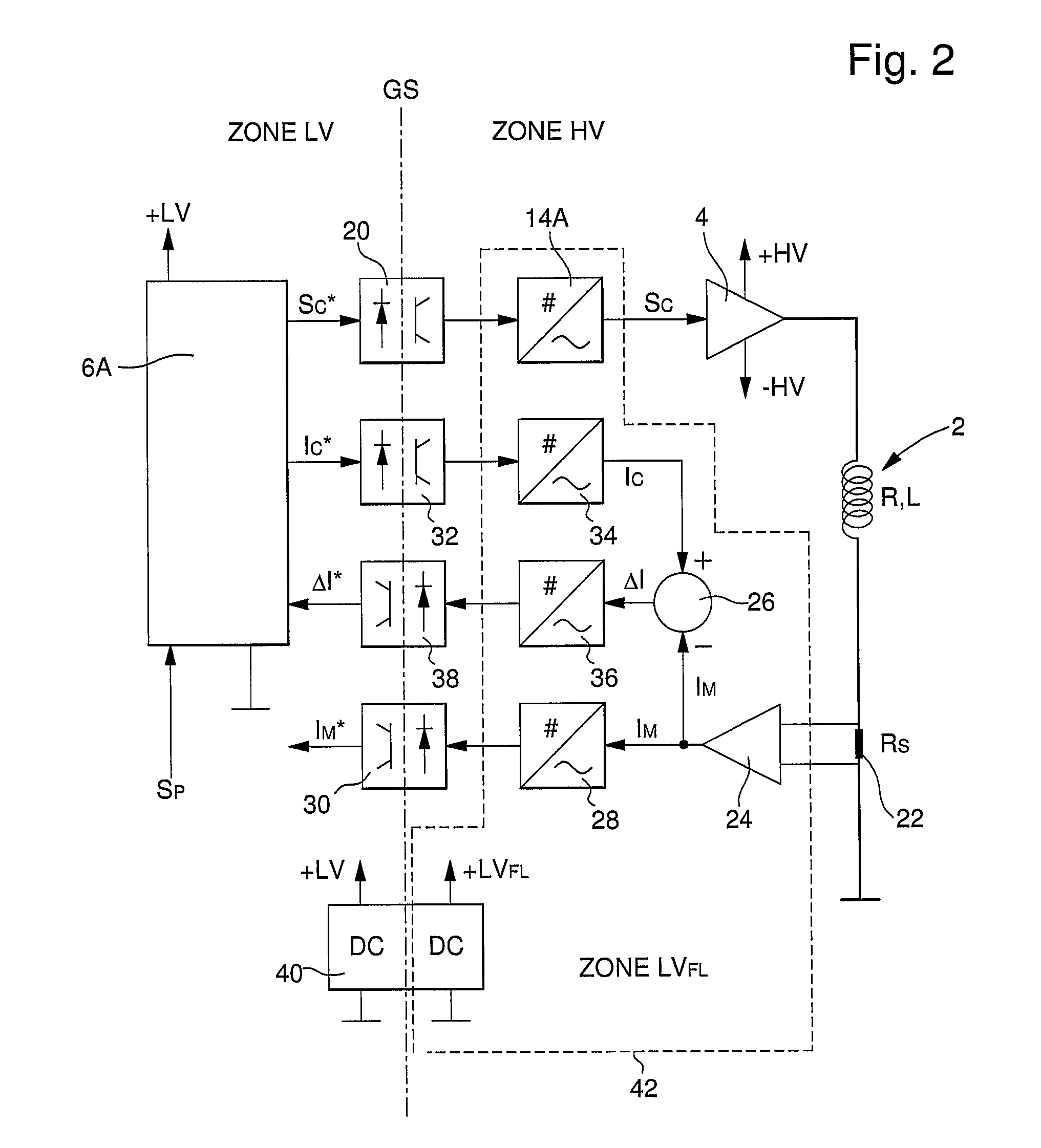Control circuit for an electric motor having a power-supply control device
a control circuit and electric motor technology, applied in the field of electric motors, can solve the problems of difficult to achieve high transmission precision of analog signals via galvanic isolation, difficult to achieve high precision of analog signals, and special sensitive magnetic sensors, so as to avoid the placement of complex and complex elements, reduce manufacturing costs, and avoid the effect of complex placemen
- Summary
- Abstract
- Description
- Claims
- Application Information
AI Technical Summary
Benefits of technology
Problems solved by technology
Method used
Image
Examples
Embodiment Construction
[0020]FIG. 2 schematically illustrates a control circuit of an electric motor according to an example embodiment of the present invention. The motor is represented by its phase 2. The supplies of the high voltage +HV, −HV are provided in a conventional manner and are formed by a power amplifier 4, for example. The power amplifier may be operated in linear mode or in switchover mode. However, in view of the high demands on the precision of the present practical application, a linear operation is preferred. Electronic control unit 6A is supplied with low voltage and is located in a low-voltage zone, “zone LV,” galvanically isolated from the high-voltage zone, “zone HV,” where phase 2 and its supply 4 are located, as required by prevailing safety standards for high voltages above a predefined limit, e.g., 48 volts.
[0021]Electronic control unit 6A provides a digital control signal SC* which, according to example embodiments, is initially made available to a galvanic separating element 2...
PUM
 Login to View More
Login to View More Abstract
Description
Claims
Application Information
 Login to View More
Login to View More - R&D
- Intellectual Property
- Life Sciences
- Materials
- Tech Scout
- Unparalleled Data Quality
- Higher Quality Content
- 60% Fewer Hallucinations
Browse by: Latest US Patents, China's latest patents, Technical Efficacy Thesaurus, Application Domain, Technology Topic, Popular Technical Reports.
© 2025 PatSnap. All rights reserved.Legal|Privacy policy|Modern Slavery Act Transparency Statement|Sitemap|About US| Contact US: help@patsnap.com



